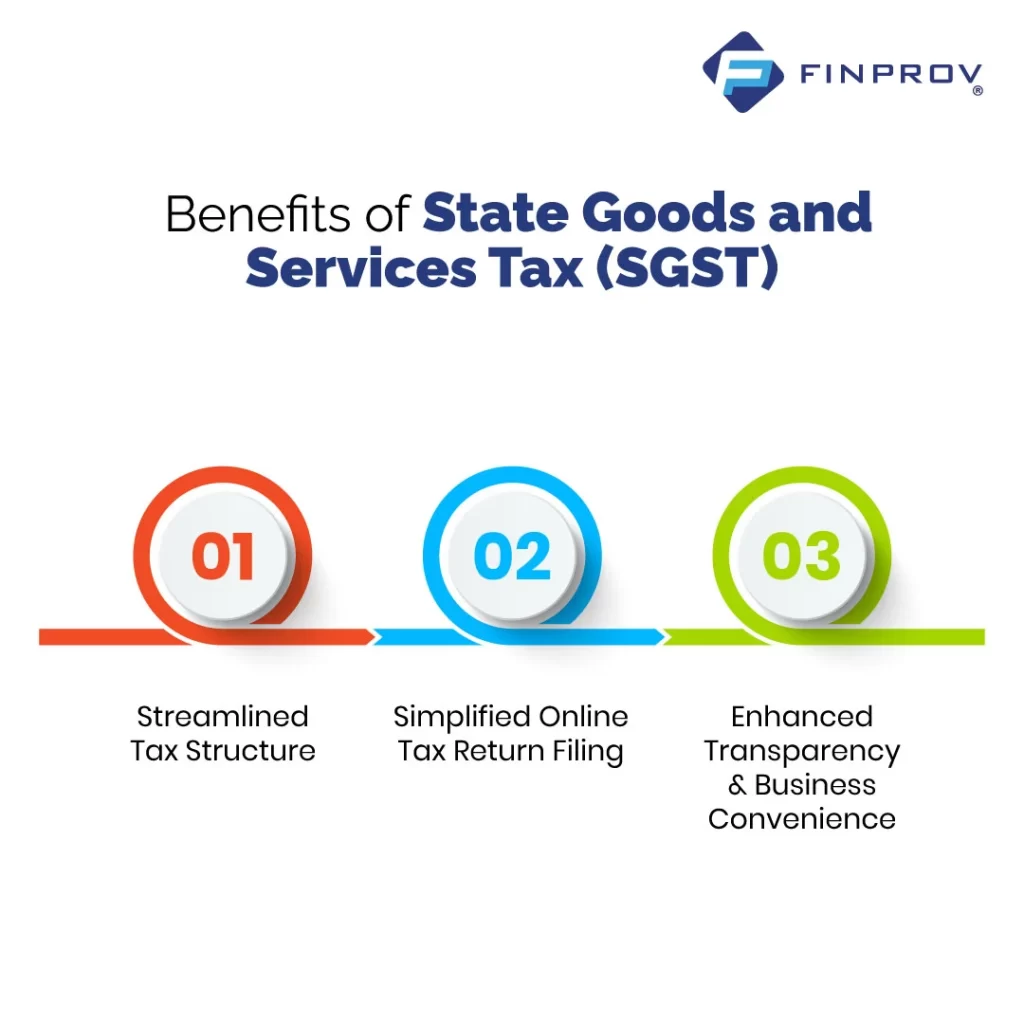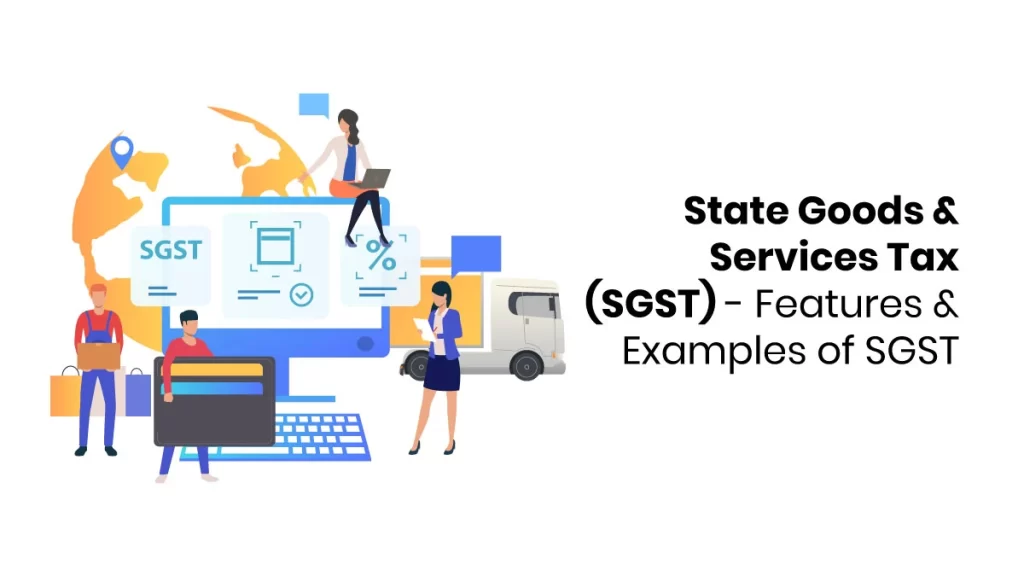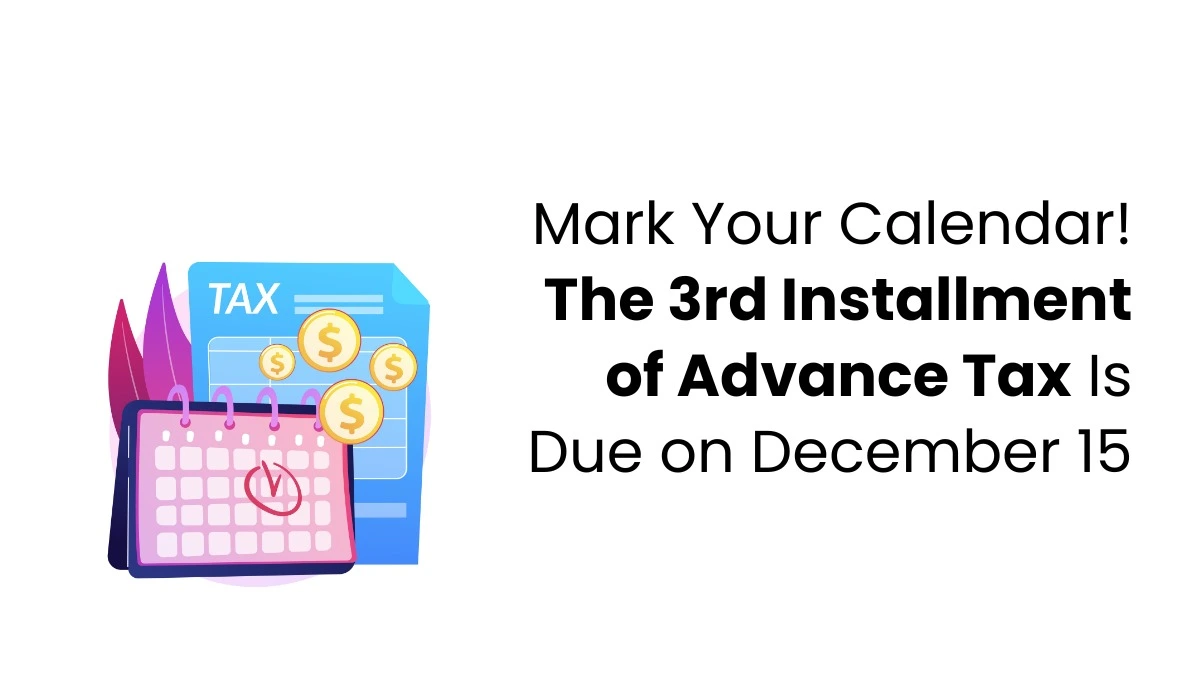SGST, or State Goods and Services Tax, is a fundamental component of the Goods and Services Tax (GST) system levied by individual states in India. This taxation framework is one of India’s most significant tax reforms, simplifying and unifying the complex tax procedures previously maintained by state and central governments. Although the initial stages of GST implementation brought about concerns and confusion, the subsequent advantages it has provided have bolstered its popularity among business owners.
Benefits of State Goods and Services Tax (SGST)
More specifically, the benefits of SGST for businesses encompass:

- Streamlined Tax Structure: Instead of dealing with 17 different types of taxes, manufacturers and consumers now adhere to the simplified GST tax laws, which can be accessed through this link.
- Simplified Online Tax Return Filing: Filing GST returns has become straightforward and can be easily managed by business owners with computer proficiency.
- Enhanced Transparency and Business Convenience: The clearly defined tax structure promotes transparency, reducing bureaucratic hurdles and corruption while encouraging businesses to fulfil their tax obligations honestly.
Features of SGST
SGST (State Goods and Services Tax) is a fundamental component of India’s Goods and Services Tax (GST) system. Individual states administer and collect it, granting them the autonomy to manage their tax revenue. The introduction of GST marked a significant shift in India’s tax landscape, unifying and simplifying various state and central taxes into a cohesive, nationwide taxation structure.
Under this system, businesses and consumers are subject to a harmonised set of tax laws. SGST operates in conjunction with CGST (Central Goods and Services Tax), which is simultaneously levied on intra-state transactions. This dual tax structure ensures uniformity in tax rates and regulations throughout the country.
SGST revenue directly benefits the state governments, enabling them to finance state-level initiatives and services. State governments have the authority to determine SGST tax rates within the framework established by the GST Council, allowing them to tailor rates to meet specific state requirements. Businesses can use an input tax credit for SGST paid on inputs and services, mitigating the cascading effect of taxation.
The compliance and administration of SGST are decentralised, with individual states managing the tax collection process. Transactions occurring within a state fall under the purview of SGST, while those crossing state boundaries are subject to IGST (Integrated Goods and Services Tax). The entire process, from filing returns to making payments, is streamlined through online platforms, enhancing transparency and reducing opportunities for tax evasion.
SGST is pivotal in supporting local economies and driving cooperative federalism in India. The revenue generated contributes to state budgets, empowering states to fund critical infrastructure projects, social programs, and essential public services. This collaboration between central and state governments in implementing GST reflects the principles of cooperative federalism and promotes a more economically integrated and efficient tax system across the country.
Example of SGST
Under the GST regime, the State Goods and Services Tax (SGST) is a tax imposed on the supply of goods and services within a particular state, with the state government responsible for its regulation under the SGST Act. To illustrate how CGST and SGST work together, consider the following scenario:
Suppose there is a dealer named Praveen operating in Kochi, Kerala, who sells goods to a customer named Mahesh in Bangalore, Karnataka, with a total invoice value of Rs. 20,000. The GST rate applicable is 18%, which includes a CGST rate of 9% and an SGST rate of 9%.
In this case, the dealer collects a total of Rs. 3,600 in taxes from the customer. Of this amount, Rs. 1,800 is attributed to the Central Government as CGST and the remaining Rs. 1,800 is earmarked for the Kerala Government as SGST. This dual tax system ensures that the central and state governments share the tax revenue generated from this intra-state transaction while maintaining uniformity in tax rates.
Where SGST is applicable?
The applicability of SGST, UTGST, IGST, and CGST in the GST system depends on the nature of the supply involved, categorised into Intra-State and Inter-State Supply.
Intra-State Supply
This type of supply occurs when the supplier and the place of supply are located within the same state or union territory. In the Intra-State Supply, the seller must collect CGST and SGST. After collection, the CGST portion is remitted to the Central Government, while the SGST portion is deposited with the respective State Government.
For instance, let’s consider an example: Gunjan Enterprises, a manufacturer based in Rajasthan, supplies goods valued at Rs. 2,00,000 to Madhur Traders, a dealer also located in Rajasthan. Gunjan Enterprises applies GST at a rate of 18%. Since it is an intra-state supply, GST is deposited to the Central and State Governments. The total GST amount, Rs. 36,000, is divided into separate accounts. This means that Rs. 18,000 is deposited into the CGST account, and another Rs. 18,000 is deposited into the SGST account. This system ensures the seamless tax revenue distribution between the Central and State Governments for intrastate transactions.
Inter-state supply
Inter-state supply occurs if the supplier’s location and the place of supply are located in different states or union territories. In this case, the supplier must levy Integrated Goods and Services Tax (IGST) on the transaction. The Central Government collects the IGST.
Moreover, any supply in a taxable territory that does not qualify as an Intra-State supply is categorised as an Inter-State supply.
For example, let’s consider a scenario: Satya Ltd, a manufacturer based in Madhya Pradesh, produces and supplies goods to Bhatia Traders, a dealer situated in Punjab. The value of the supplied goods is Rs. 1,00,000, and GST at 18% is applied. Since this is an inter-state supply, the entire GST amounting to Rs. 18,000 is deposited only with the Central Government. This system simplifies tax collection and ensures that tax revenue from inter-state transactions is centralized under the CGST head.
The State Goods and Service Tax (SGST) is an integral component of India’s Goods and Services Tax (GST) framework, designed to empower individual states to impose and collect taxes on intra-state supplies of goods and services. The primary objective of SGST is to decentralize the tax collection process, ensuring that states have the autonomy to manage their revenue and cater to their specific needs. To learn more about SGST procedures, joining a GST course enables learners to gain more profound knowledge in the accounting and finance industry.
Finprov’s GST certification course covers a wide range of essential topics, including the fundamentals of GST, Input Tax Credit, Composition Scheme, GST return filing, E-way bill, Time of Supply, Place of Supply, Reverse Charge Mechanism, and more. It’s tailored to meet the learning needs of graduates and professionals looking to expand their expertise in accounting and finance. By choosing Finprov for your GST certification course, you gain access to quality education and valuable, highly relevant insights in these domains.










